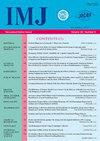PECULIARITIES OF MANIFESTATION AND CLINICAL SIGNS OF DISSOCIATIVE DISORDERS IN COMBATANTS OF THE ARMED FORCES OF UKRAINE PARTICIPATED IN THE ANTI-TERRORIST/JOINT FORCES OPERATION
Q4 Medicine
引用次数: 0
Abstract
The problem of studying the structure, diagnosis and treatment of mental disorders in Ukrainian servicemen has been acute since the beginning of the Anti−Terrorist Operation in 2014 and later with the change of its format to Operation of Joint Forces with a large number of troops to participate in hostilities. To establish the features of the debut and clinical manifestations of dissociative disorders in servicemen, 34 combatants were examined. Research methods were as follows: anamnestic, psychopathological, psychodiagnostic, statistical. The following dissociative manifestations were noted: motor disorders in the form of tremor of the upper extremities or the whole body, pseudoparesis and pseudoparalysis, motor tics, globus hystericus, seizures in the form of pseudoepileptic seizures, speech disorders, stupor, short−term amnesia, partial vision loss etc. In servicemen, such manifestations were found at symptom and syndrome levels in 55.88 % of cases; those reached the nosological level were observed in 44.12 % and were part of the structure of such disorders as isolated dissociative disorder, maladaptation, post−traumatic stress disorder. The clinical picture and severity of dissociative manifestations depend on the stressor, age and personality traits of the serviceman. Their immediate causes were recognized as: the state of anticipation of an inevitable event, the occurrence of which the patient subconsciously wanted to avoid; the state of being in the middle of a psychologically uncomfortable environment; state of being in a short−term, acute life−threatening situation; condition after the last acute or a number of acute psycho−traumatic situations of a life−threatening nature; in the structure of flashbacks; a condition after or on the background of an acute or chronic psycho−traumatic situation of a life−threatening origin or a state of chronic psycho−emotional and physical fatigue, which was accompanied by sleep deprivation. Key words: dissociative disorders, psychopathology, combatants, anti−terrorist/Joint Forces operation.参加反恐/联合部队行动的乌克兰武装部队战斗人员分离性障碍的表现特点和临床症状
自2014年反恐行动开始以来,研究乌克兰军人精神障碍的结构、诊断和治疗问题一直很突出,后来反恐行动的形式改为联合部队行动,有大量部队参加敌对行动。为了确定军人解离障碍的首次出现和临床表现的特点,对34名战斗人员进行了检查。研究方法有:记忆、精神病理学、心理诊断、统计学。注意到以下解离性表现:上肢或全身震颤形式的运动障碍、假性麻痹和假性麻痹、运动抽搐、歇斯底里、假性癫痫发作形式的癫痫发作、言语障碍、昏迷、短期健忘症、部分视力丧失等,55.88%的病例在症状和证候水平上有这种表现;达到疾病学水平的占44.12%,属于孤立性解离障碍、适应不良、创伤后应激障碍等疾病结构的一部分。解离表现的临床表现和严重程度取决于军人的压力源、年龄和性格特征。它们的直接原因被认为是:对不可避免的事件的预期状态,患者下意识地想避免这种事件的发生;处于心理上不舒服的环境中的状态;处于短期、严重威胁生命的状态;最后一次急性或多次具有生命威胁性质的急性心理创伤后的情况;在倒叙结构中;在威胁生命的急性或慢性心理创伤情况之后或背景下的情况,或伴随睡眠剥夺的慢性心理、情绪和身体疲劳状态。关键词:解离障碍,精神病理学,战斗人员,反恐/联合部队行动。
本文章由计算机程序翻译,如有差异,请以英文原文为准。
求助全文
约1分钟内获得全文
求助全文
来源期刊

International Medical Journal
医学-医学:内科
自引率
0.00%
发文量
21
审稿时长
4-8 weeks
期刊介绍:
The International Medical Journal is intended to provide a multidisciplinary forum for the exchange of ideas and information among professionals concerned with medicine and related disciplines in the world. It is recognized that many other disciplines have an important contribution to make in furthering knowledge of the physical life and mental life and the Editors welcome relevant contributions from them.
The Editors and Publishers wish to encourage a dialogue among the experts from different countries whose diverse cultures afford interesting and challenging alternatives to existing theories and practices. Priority will therefore be given to articles which are oriented to an international perspective. The journal will publish reviews of high quality on contemporary issues, significant clinical studies, and conceptual contributions, as well as serve in the rapid dissemination of important and relevant research findings.
The International Medical Journal (IMJ) was first established in 1994.
 求助内容:
求助内容: 应助结果提醒方式:
应助结果提醒方式:


